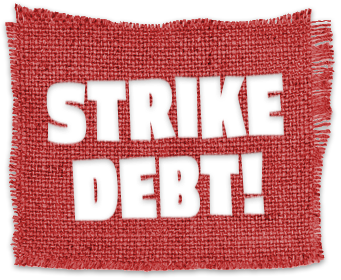http://cadtm.org/Central-Banks-lend-massively-to
CADTM: Committee for the Abolition of Third World Debt
Part 1
[h=1]Central Banks lend massively to the banking sector[/h] 23 August by
Eric Toussaint
Summary: Since the banking bubble burst in 2007, the major Central Banks of the most industrialised countries lend massively to private banks at very low interest rates in order to avoid their failure, thus permitting the big banks that take the most advantage to save considerable amounts in interest payments.
The Fed purchases massive amounts of structured mortgage backed securities, although the ECB does not purchase these products, it allows banks to deposit them as guarantee (or collateral) against the loans they grant. The governments also bring their guarantees, and inject money, into banks in order to recapitalize them.
The systemically important banks are well aware that in case of problems they are protected by their size, they are “too big to fail” and know they can count on state aid to bail them out whenever necessary.
Governments borrow on financial markets by issuing sovereign debt bonds. They entrust the sale of these securities to large private banks. The banks also benefit from lower taxes on profits.
In addition, within the eurozone, banks have the monopoly of credit to the public sector.
Since 2007 Governments and Central Banks of the most industrialized Western countries - hit by the greatest economic crisis since the 1930s - have given top priority to the rescue of private banks and the financial system (insurance companies, mutual funds, private pension funds, etc.) |
1| The bank bailout is done at the expense of the overwhelming majority of the population. The governments have done their utmost to maintain private banks’ main privileges and to keep their power intact. The cost is enormous: explosion of public debt, loss of tax revenues, tight restrictions on loans to households and small businesses, further speculative and adventurous activities, which, in some cases, have required expensive new rescues.
Central Banks lend massively to the banking sector
Since the banking bubble burst in 2007, the major Central Banks of the most industrialized countries (ECB, Bank of England, Fed in the US, National Bank of Switzerland, Bank of Japan) have lent massively to banks in order to avoid failures. Without this source of unlimited credit, a great number of banks would find themselves in payment difficulties, as the usual funding sources declined, the interbank market had seized up (the banks lost confidence in each other), the sale of banks’ covered bonds became weak, and the money market funds became erratic. The sum total loaned by Central Banks to the private sector since 2007 is more than $20 trillion. As this has been made available at very low interest rates the big banks have been able to enormously reduce interest repayments.
[TABLE="class: spip"]
[TR="class: row_even"]
[TD]
What are Money Market Funds? Money Market Funds (MMFs) are financial corporations in the United States and Europe, rarely controlled and little subject to regulations as they act without banking licences. They are closely akin to shadow banking. Supposedly the MMFs act with prudence but the reality is very different. This is cause for great concern given the vast quantities of money they handle, and the sharp drop in their profitability since 2008. In the United States, they managed $2.7 trillion in 2012, a significant drop from the $3.8 trillion in 2008. As investment funds the MMFs collect capital from investors (banks, pension funds, etc.) and use it to make short-term, often day to day, loans to banks and businesses. During the 2000s MMF financing has become an essential short-term source of liquidities for banks. The biggest are Prime Money Market Fund, Created by JP Morgan, the biggest bank in the United States, is worth $115 billion. Wells Fargo the 4th largest bank in the United States has an MMF managing $24 billion. Goldman Sachs the 5th biggest bank controls an MMF worth $25 billion. US banks also operate MMFs in Europe; JP Morgan (€18 billion euros), BlackRock (€11.5 billion), Goldman Sachs (€10 billion), alongside European banks such as BNP Paribas (€7.4 billion), and Deutsche Bank (€11.3 billion). Some MMFs also operate in British pounds. Michel Barnier (European Commissioner for the Internal Market and Services) has announced that he would like regulations to be imposed on this activity, but this is most likely to remain nothing more than a statement of good intentions |
2|. The Obama administration is also said to be considering new regulations, to avoid having to bail out a bankrupt MMF with public money.
Moody’s rating agency has worked out that during the 2007-2009 period 62 MMFs had to be bailed out by the banks and pension funds that had created them, 36 in the US and 26 in Europe for a total cost of $12,1 billion. Between 1980 and 2007 146 MMFs had to be saved by their sponsors. Again according to Moody’s, 20 MMFs were bailed out during 2010-2011 |
3|. This shows up to what point they are a menace to the financial system.
[/TD]
[/TR]
[/TABLE]
Along with direct cash provisions Central Banks have other ways to assist private banks. Between 2008 and 2014 the Fed purchased very large quantities of Mortgage Backed Securities (MBS), totalling $1.5 trillion |
4|. In 2012-2013 it bought up to $40 billion “worth” a month from banks and estate agents |
5|. Towards the end of 2013 the Fed started to reduce its purchases, which were no more than $35 billion in March 2014. As of October 2014 the FED will hold $1.7 trillion worth of MBS, about 21% of the total value of this kind of toxic product. |
6|
The ECB does not purchase these products but allows banks to deposit them as collateral, that is, as guarantees for the loans they grant. During the 2010-2013 period the “value” of
Asset Backed Securities (ABS) on deposit at the ECB varied between €325 billion and €490 billion.
The ECB also purchased covered bonds, issued by private banks to finance their activities |
7|. This is a very important assistance by the ECB to the private banks, which, as we have seen, had serious difficulty to find funding on the financial markets. This assistance has quite simply been ignored by the media. Since the beginning of the crisis the ECB has purchased €76 billion of covered bonds, €22 billion on the primary market and €54 billion on the secondary market, including bonds rated as bad as BBB-,which expresses lack of confidence in the issuers. On the 18 March 2014 the ECB held €52 billion “worth” of covered bonds. This is a very large proportion of the total amount of the covered bonds the banks have issued. In 2013 the amount was €166 billion, 50% down in two years |
8|.
Translation : CADTM
Part 1
Part 2
Part 3
Part 4
[h=2]Footnotes[/h]|
1| In Japan the government and Central Bank did the same when their real estate bubble burst at the beginning of the 1990s . See Daniel Munevar, “Décennies perdues au Japon (lost decades in Japan)”,
in Damien Millet and Eric Toussaint,
La dette ou la vie (Life or debt), Aden-CADTM, 2011, chapter 15 (in French).
|
2|
Financial Times, « EU shadow banking plan rapped », 26 mars 2012 ; « MMF lose worth in low interest rate world », 10 septembre 2012; « EU abandons reform on money market funds” » 10 mars 2014.
|
3|
Financial Times, « 20 money market funds rescued », 21 octobre 2013.
|
4| End January 2014 the volume of the Fed’s balance-sheet is over $4 trillion: $2.228 trillion in treasury bonds and $1.586 trillion Mortgage backed securities (MBS).
|
5| Fannie Mae, Freddie Mac and Ginnie Mae.
|
6| Since the beginning of the crisis the FED has bought back more than $2.4 trillion of US treasury bonds (in October 2013 the FED held US bonds worth $2.45 trillion) which is about 18% of all current US treasury bonds. The FED does not purchase them directly from US treasury. It purchases them on the open market from the banks who themselves had purchased them from the US treasury. See US legislation on the matter. The Bank of England has done the same.
|
7| Natixis, which is, like other banks, favourable to these purchases has published an enthusiastic report on this question in 2005:
http://cib.natixis.com/flushdoc.asp...
|
8| See
Financial Times, “Europe covered bond issues slump”», 27 November 2013.
Éric Toussaint, is a historian and political scientist who completed his Ph.D. at the universities of Paris VIII and Liège. He is the President of CADTM Belgium (
www.cadtm.org), and sits on the Scientific Council of ATTAC France. He is the co-author, with Damien Millet of
Debt, the IMF, and the World Bank: Sixty Questions, Sixty Answers, Monthly Review Books, New York, 2010. He is the author of many essays including one on Jacques de Groote entitled Procès d’un homme exemplaire (
The Trial of an Exemplary Man), Al Dante, Marseille, 2013, and wrote with Damien Millet,
AAA. Audit Annulation Autre politique (Audit, Abolition, Alternative Politics), Le Seuil, Paris, 2012.






